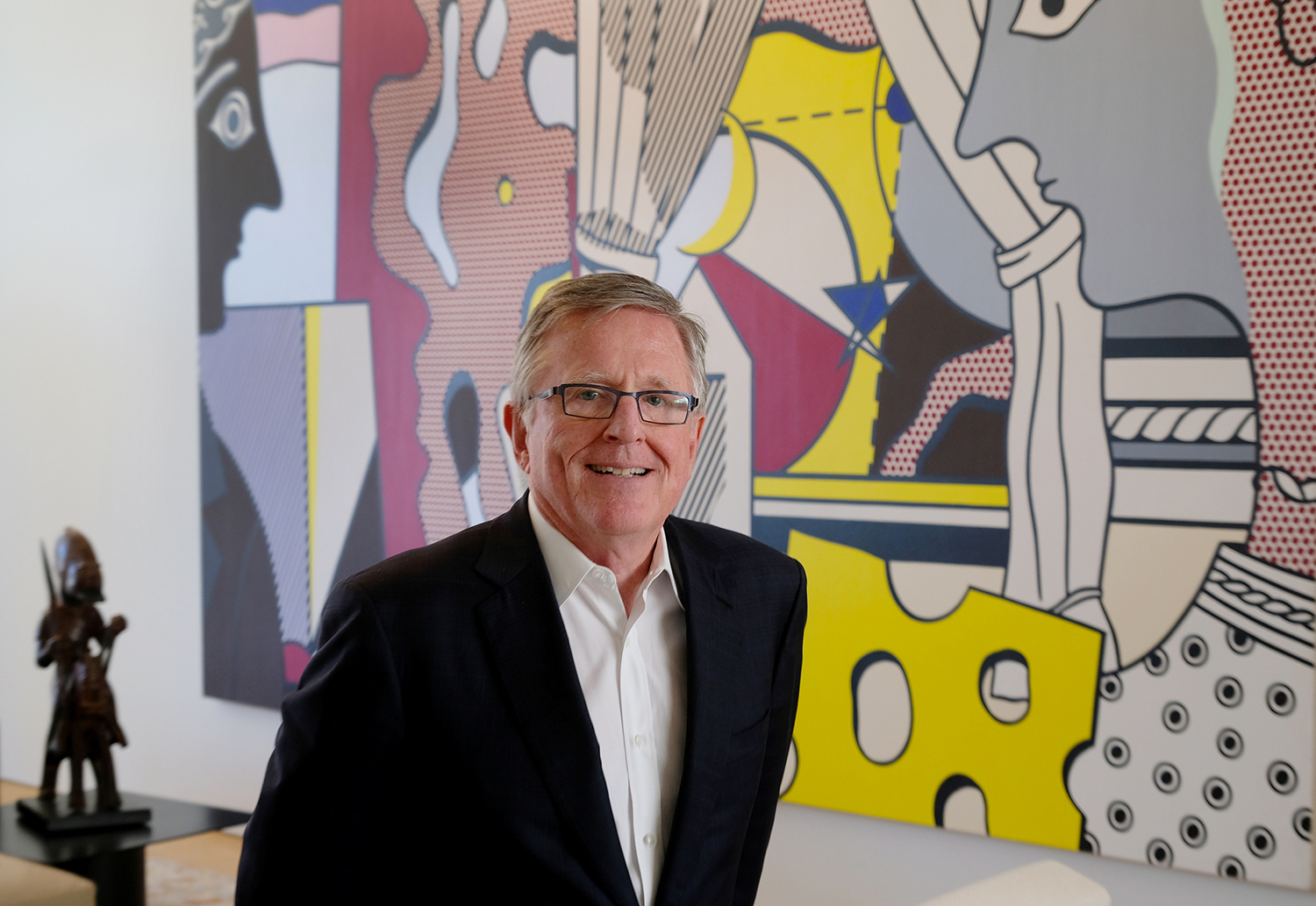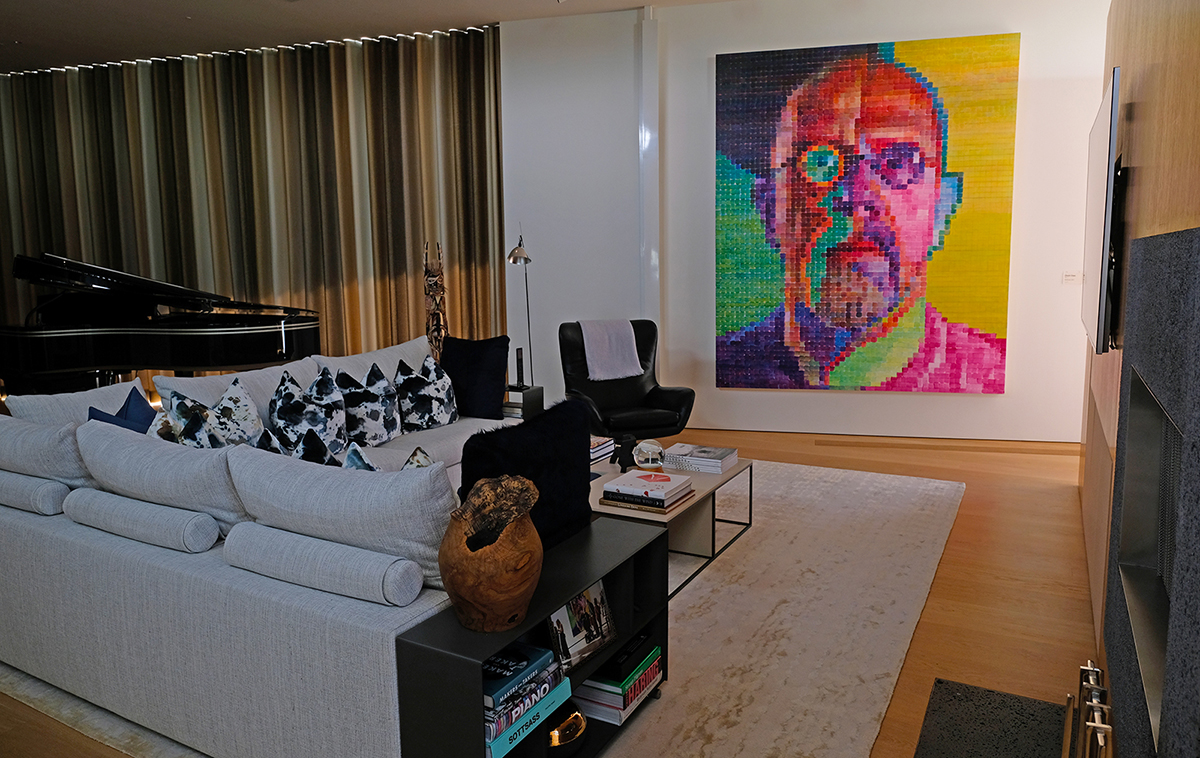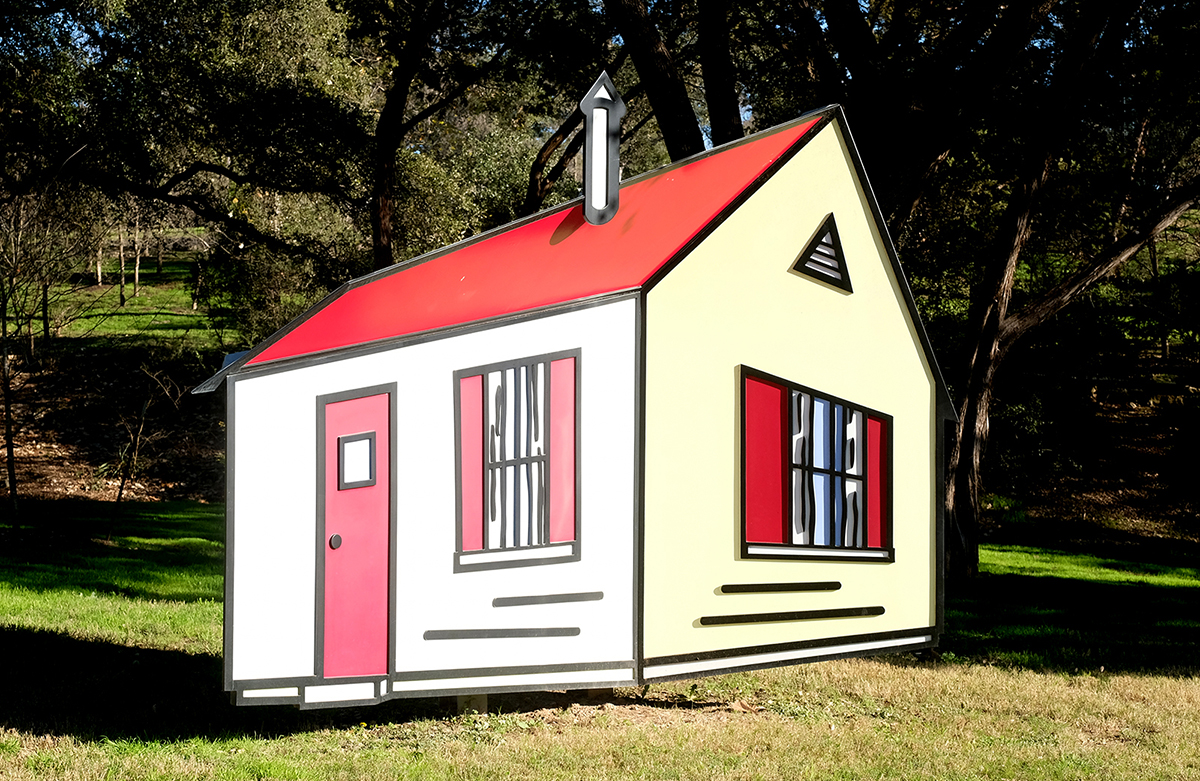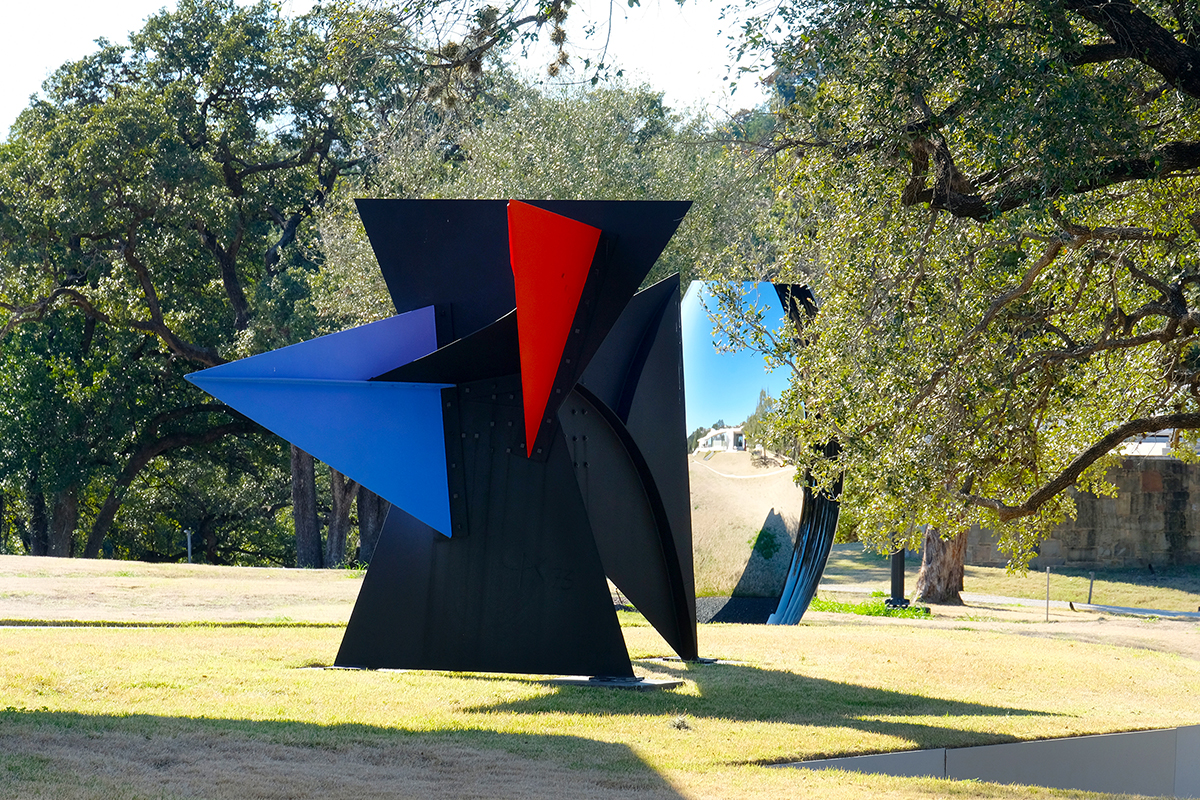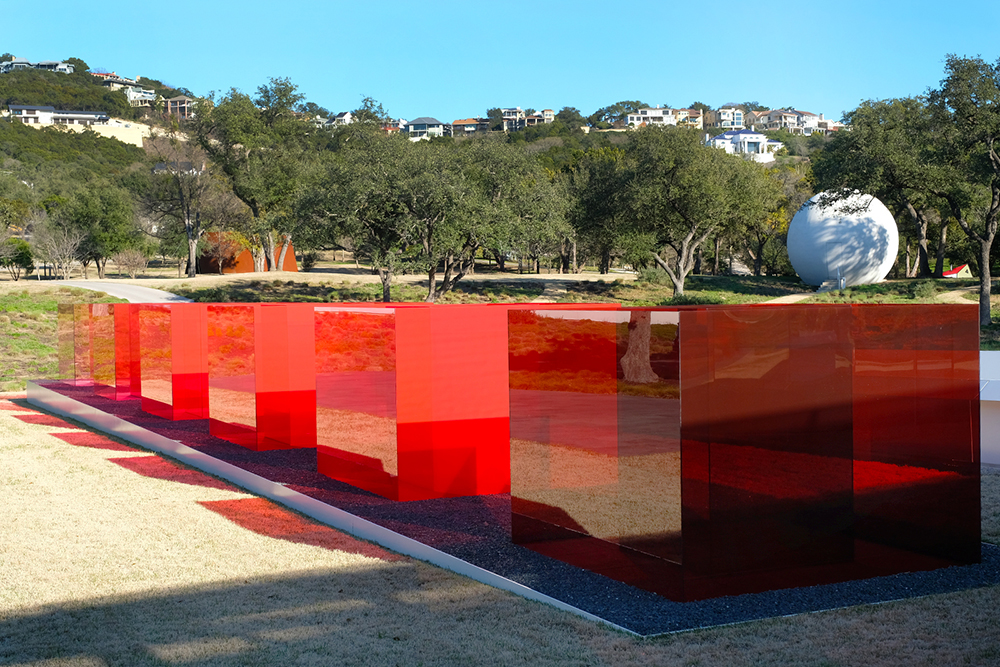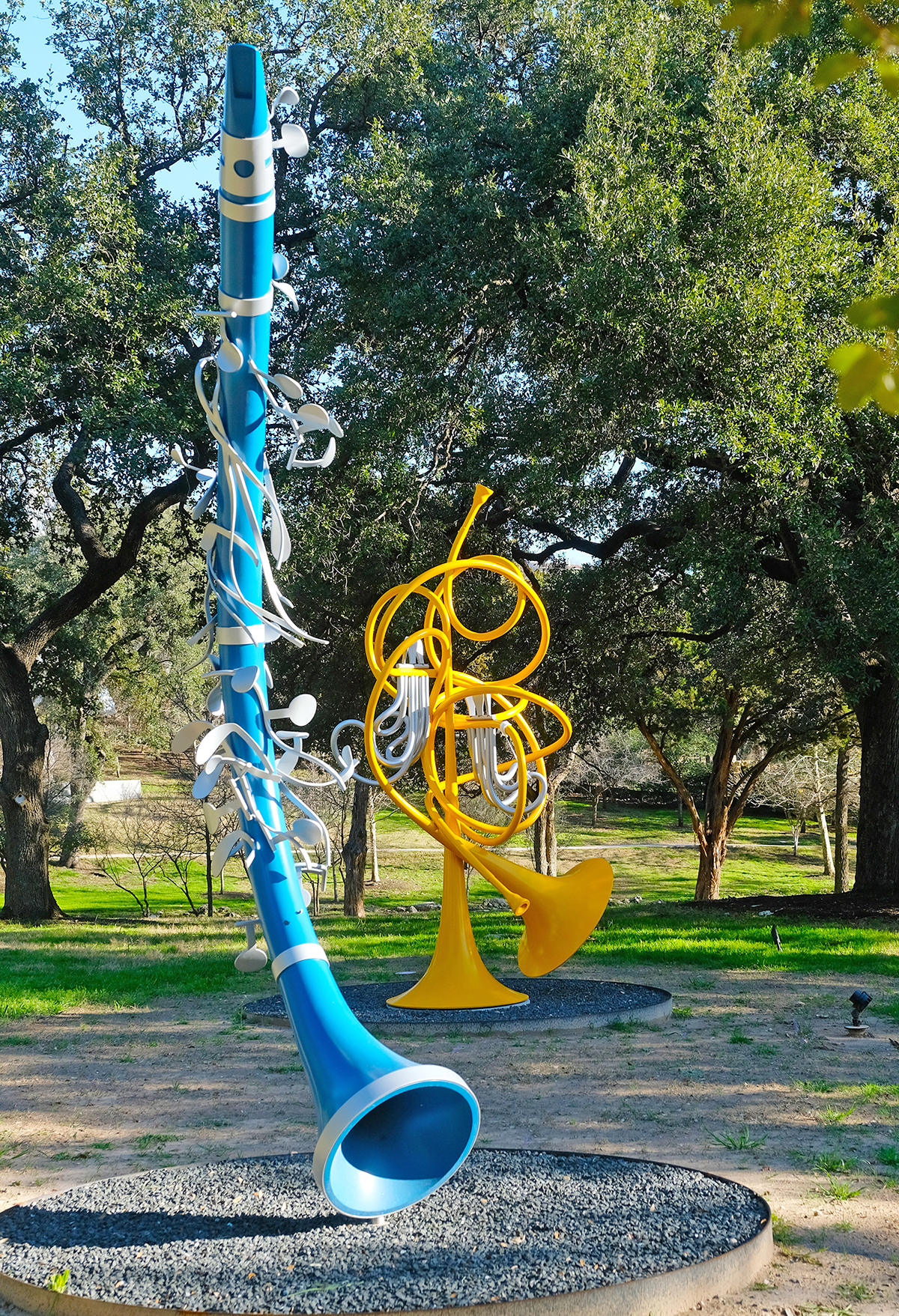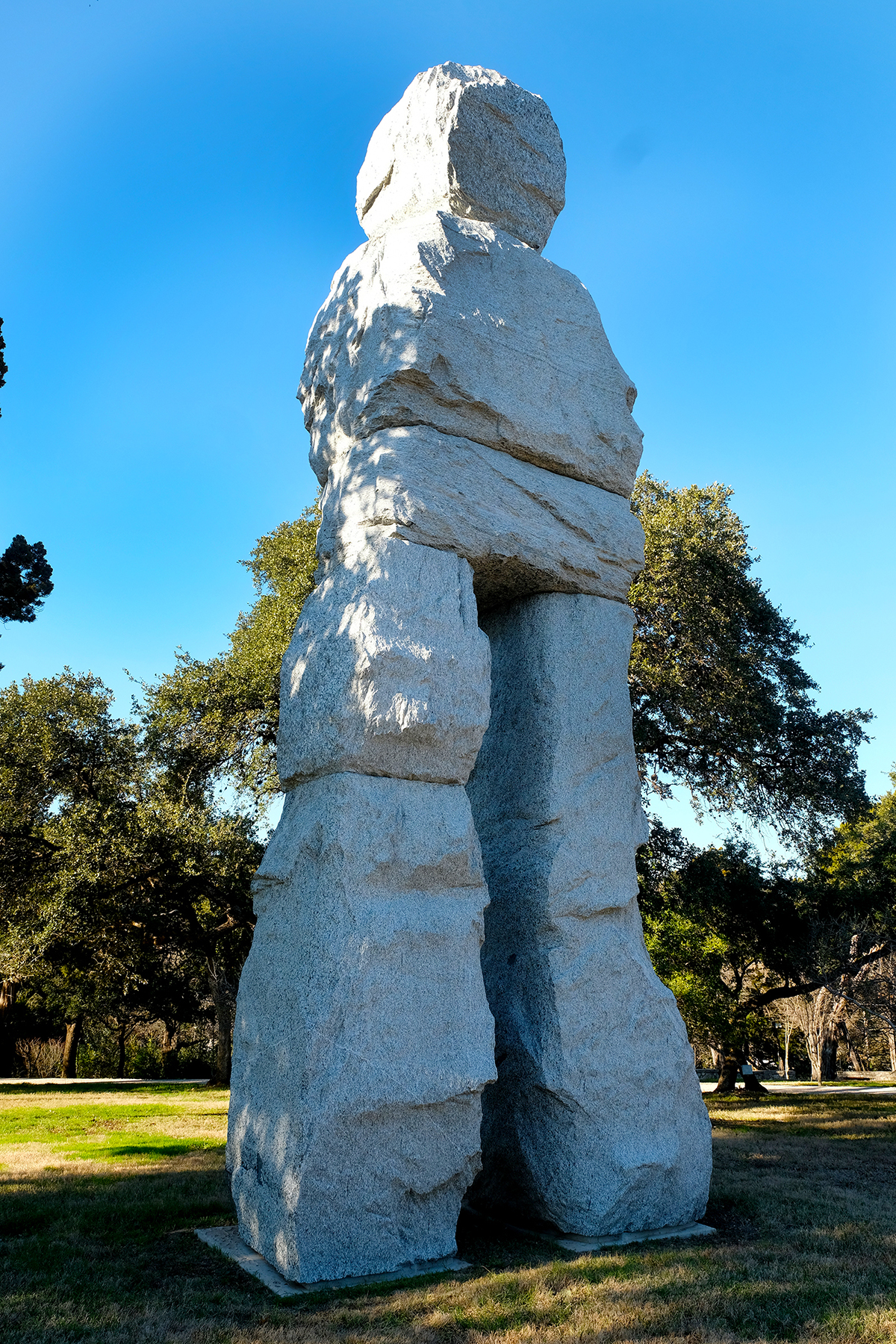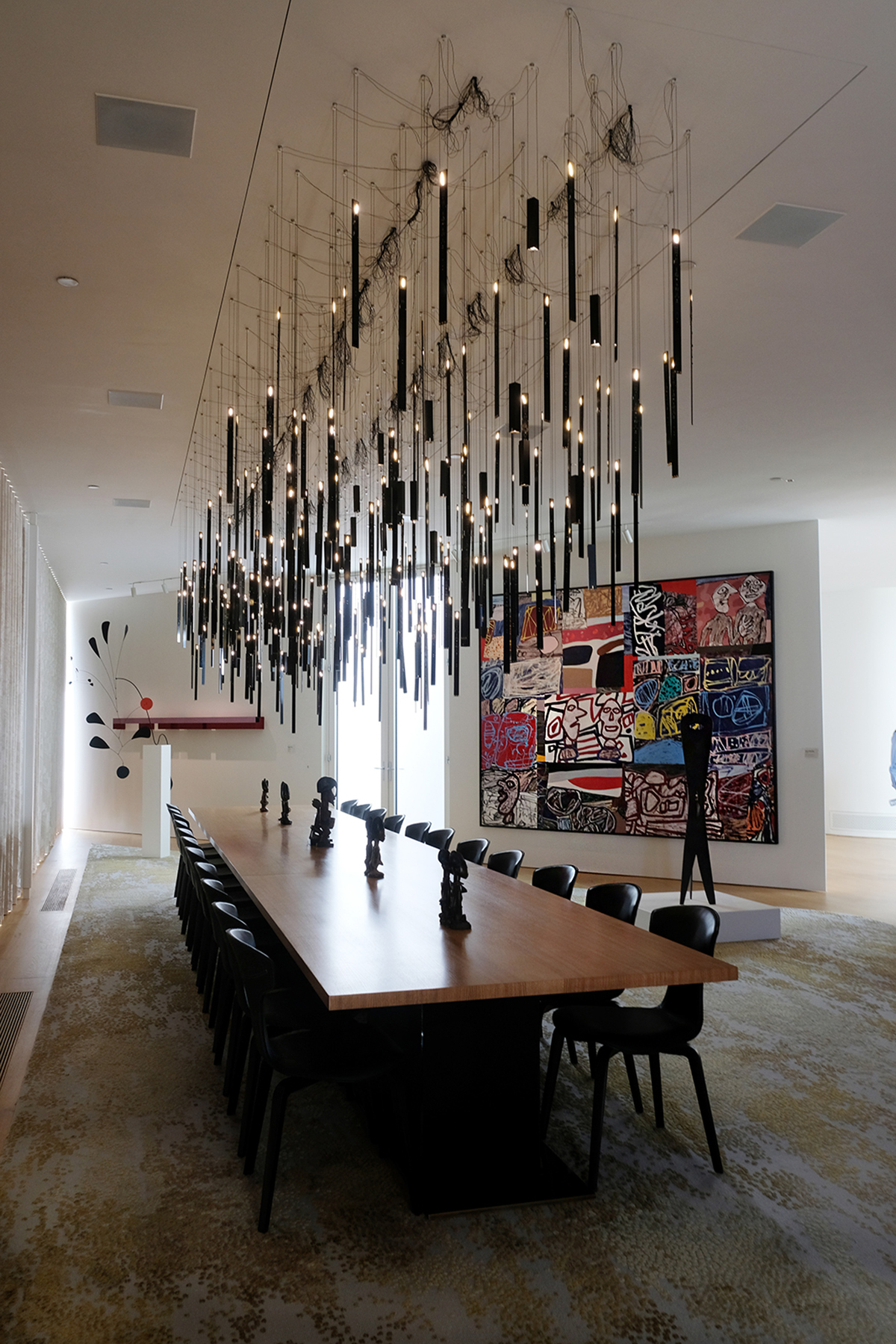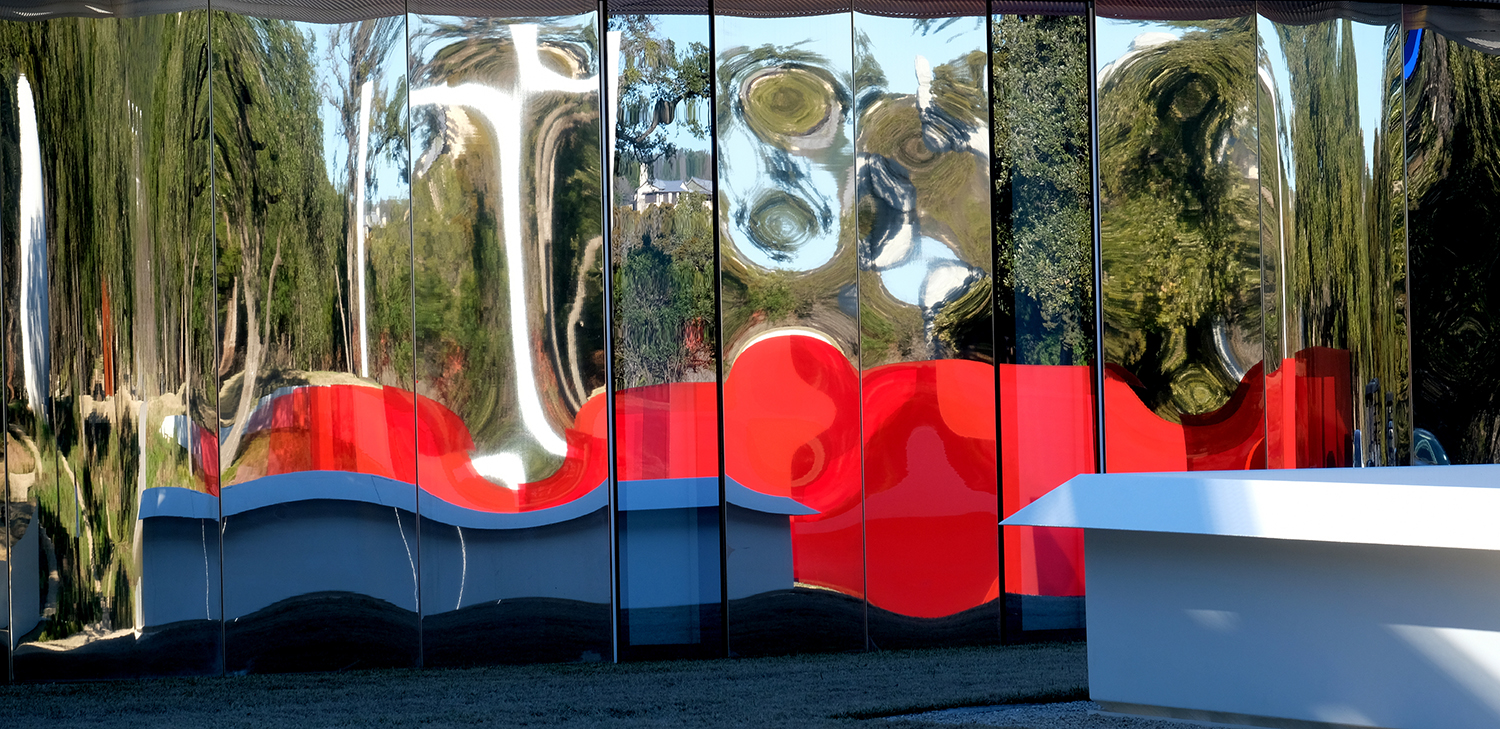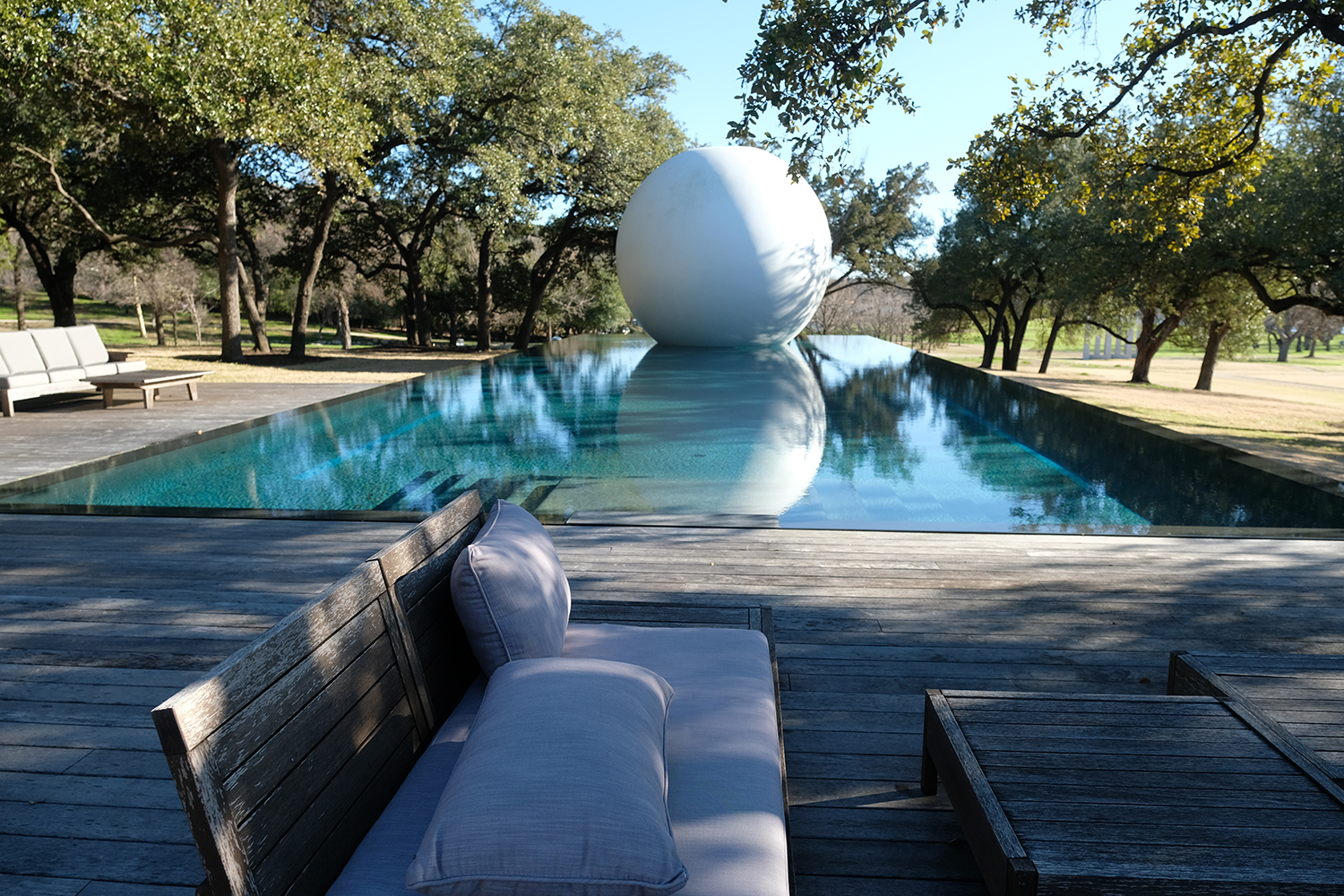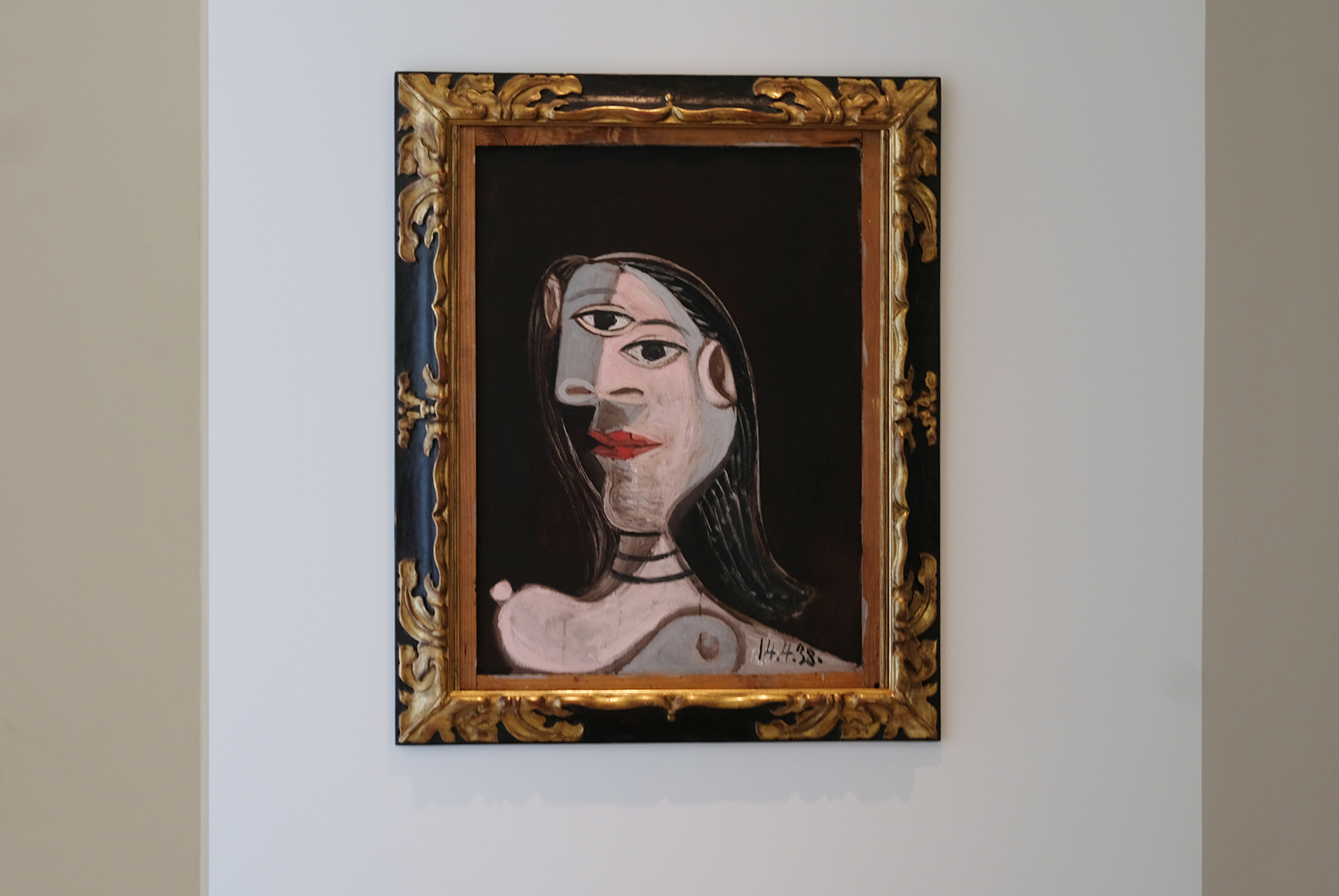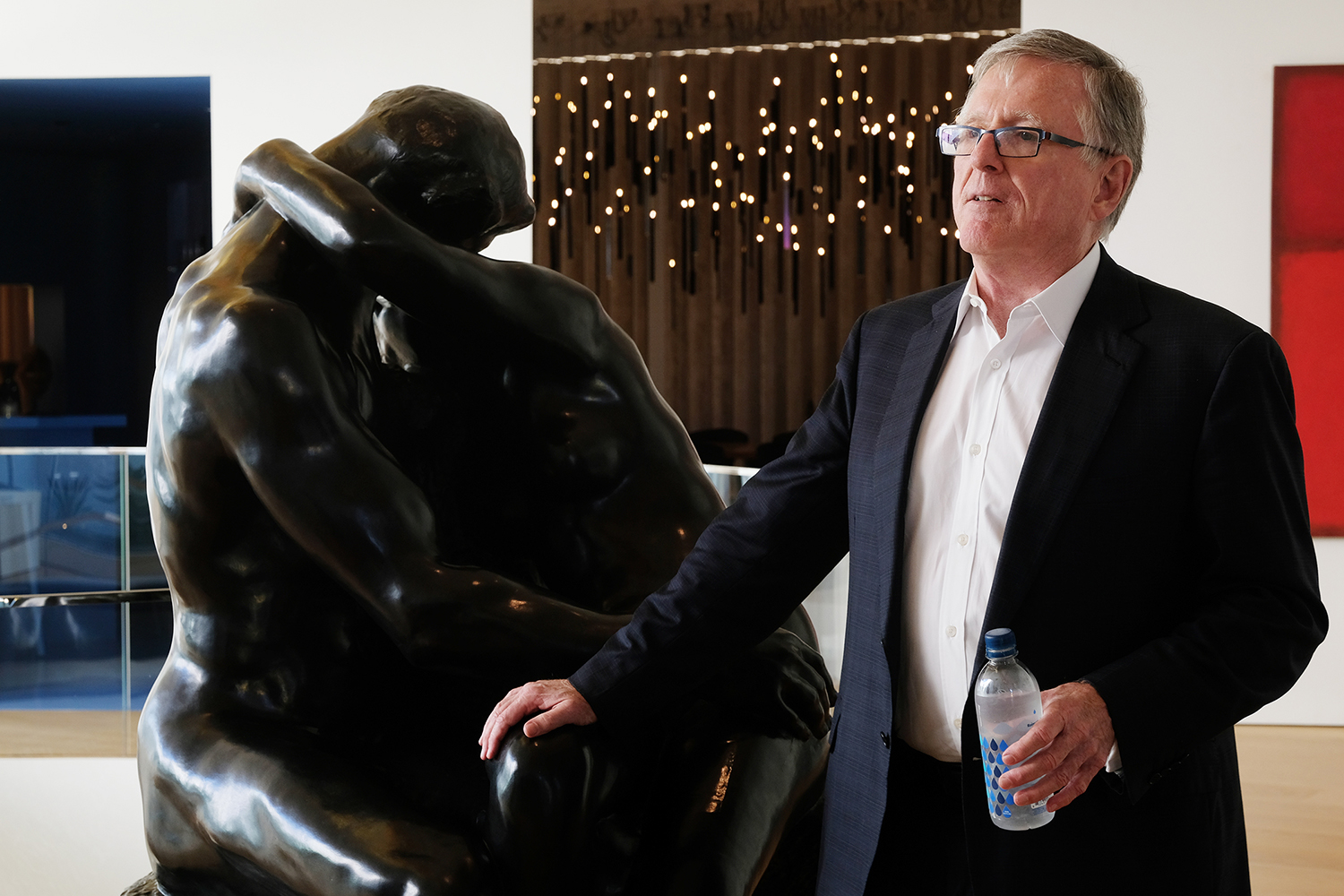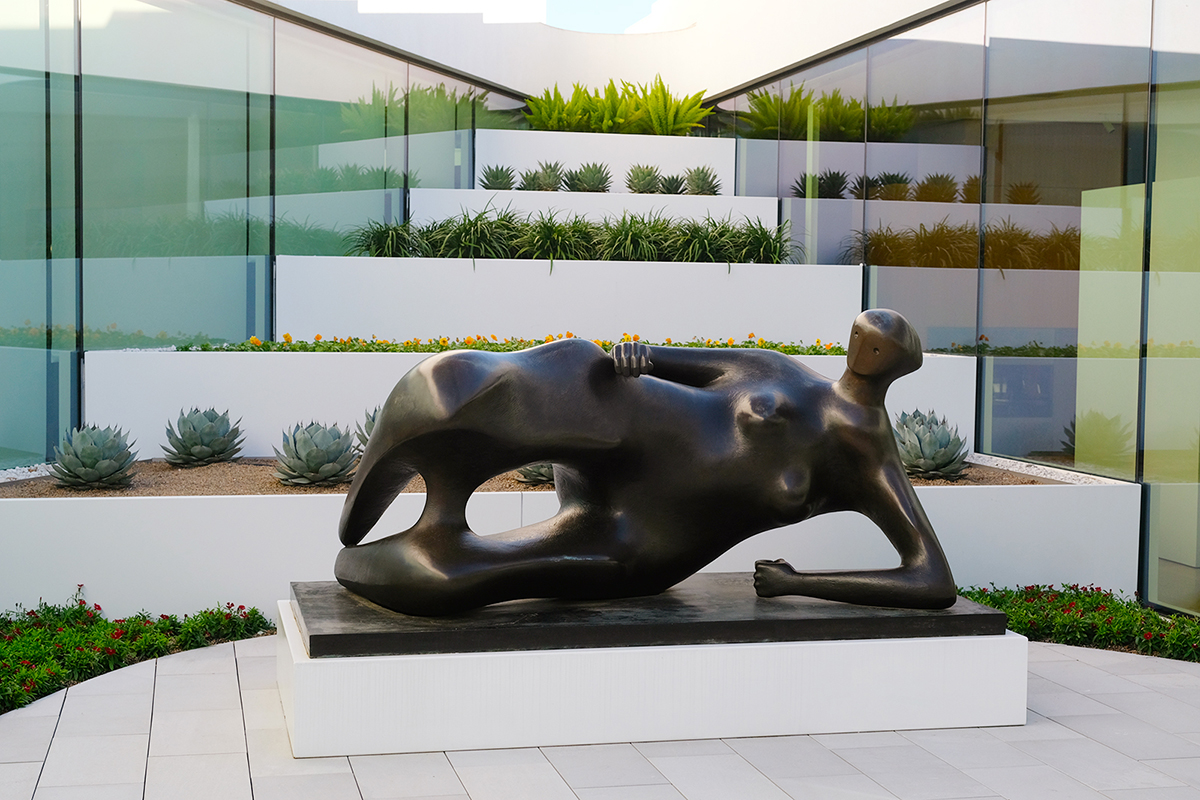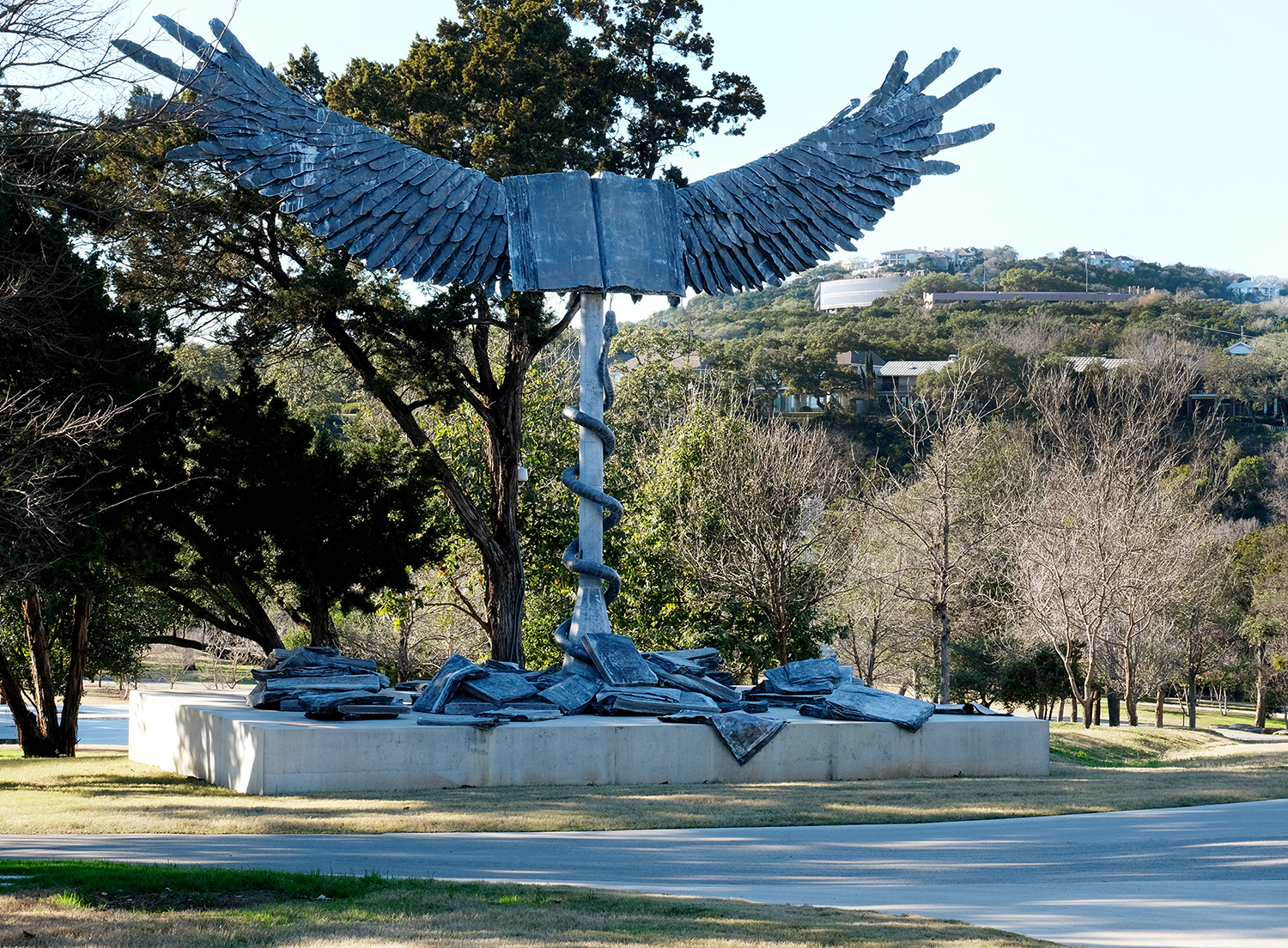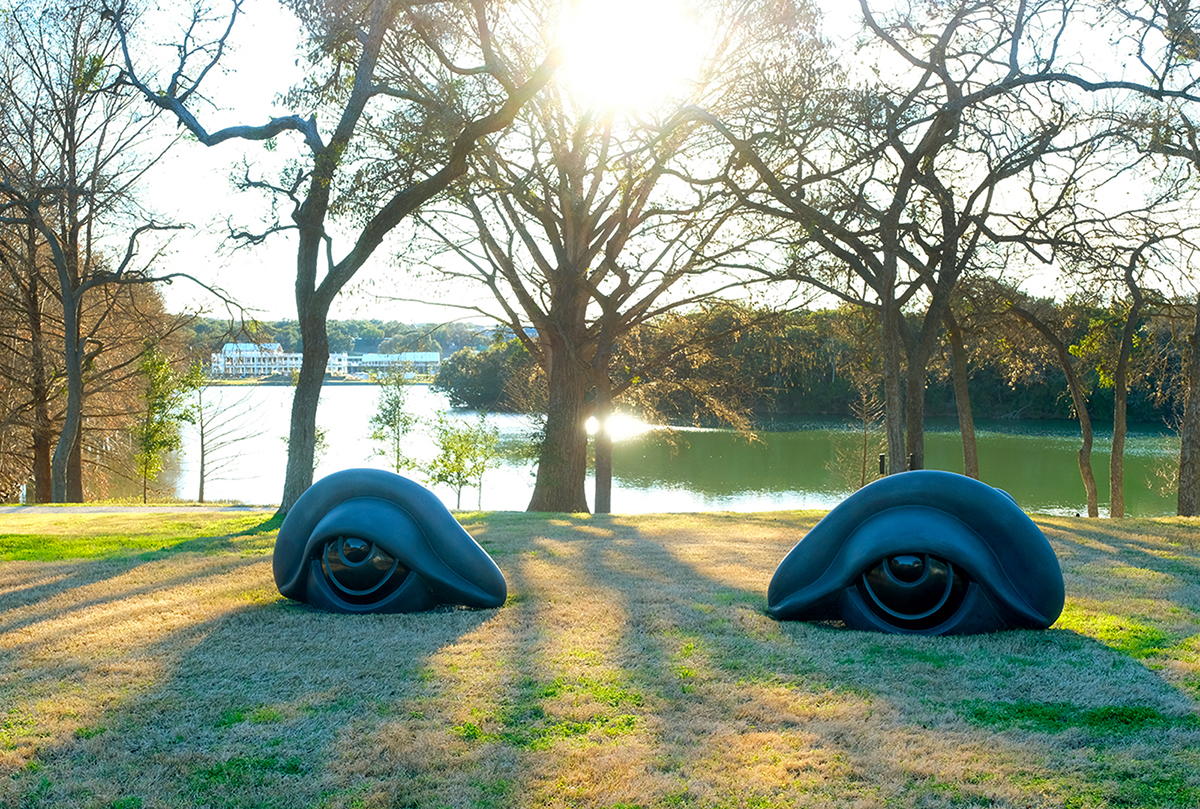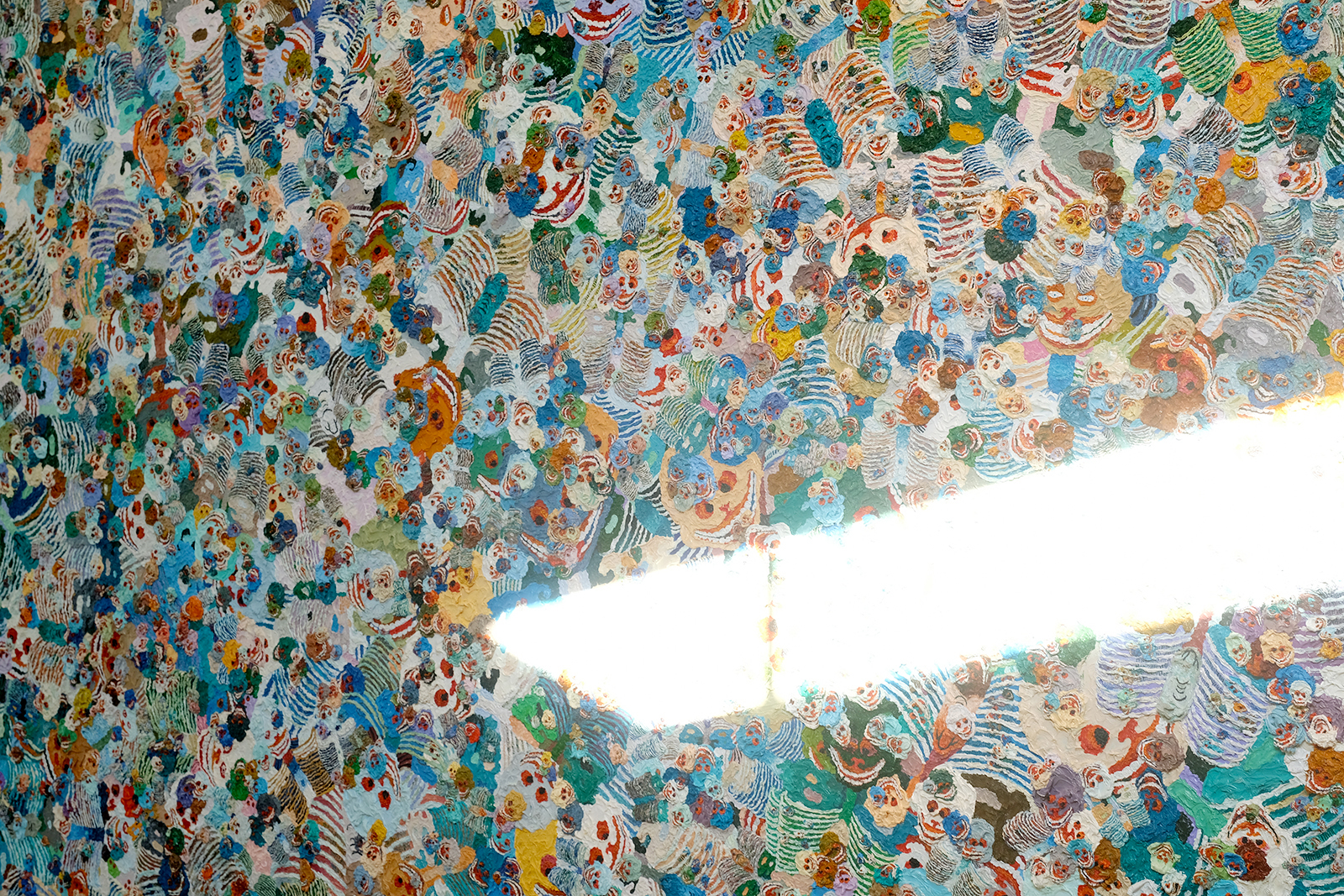The Collector’s Vision
“Welcome Parade” by Jean Dubuffet is on the grounds at the back of David Booth’s home in Austin.
Billionaire David Booth has assembled a stunning collection of art on his Austin estate. When he’s gone, he wants to share it with the public.
Austin could end up with an art collection of international acclaim if plans by Austin billionaire David Booth become a reality.
During the past six years, Booth has amassed more than 200 paintings, sculptures and other artwork — a prized collection that has transformed the grounds of his 56-acre Lake Austin estate with pieces from some of the world’s greatest artists.
Now at 73, Booth — founder of Dimensional Fund Advisors, and a noted philanthropist and art collector — is contemplating his legacy.
Booth wants to convert his property to a civic use, to make it accessible to the public for small groups to tour after his death. He is moving forward with a proposed zoning change through his land-use attorney, Austin lawyer David Armbrust.
The property is currently governed by a type of zoning known as a planned unit development, or PUD. Booth is seeking an amendment to the PUD that would allow for the eventual civic use. Booth plans to live on the property — which overlooks Lake Austin and Bull Creek — under its current residential zoning until his death.
Booth said he is still brainstorming specifics, such as what kind of entity or institution might run the operations, which he plans to leave an endowment to fund.
David Booth poses in front of the Roy Lichtenstein work “Cosmology.”
In addition to the outdoor sculpture gardens, Booth says he envisions his house becoming a site for a rotating exhibition space or education and research facility.
“It would be fantastic to leave this behind so others could enjoy it as much as I have,” Booth said during a recent private tour for the American-Statesman. “I think I’m doing something great for the city. It seems like it shouldn’t go away once I die.”
Booth‘s collection includes pieces from some of the world‘s most famous artists and sculptors. Among them are Pablo Picasso, Auguste Rodin, Jeff Koons, Richard Serra, James Turrell, Roy Lichtenstein, Michael Heizer, Louise Bourgeois, Anish Kapoor, Urs Fischer and Anselm Kiefer.
Kiefer’s lead sculpture, Uraeus, is just one of the many striking pieces in the collection. Kiefer originally installed the piece, featuring an open book with gigantic outstretched wings and a serpent spiraling up a 20-foot column, in New York’s Rockefeller Center in 2018.
Booth’s collection has attracted interest from arts patrons across the nation, who say it would elevate Austin’ place in the international arts sphere.
“These are (among) the greatest names in the history of art. That‘s why it’s so significant,” said American businessman and art collector Michael “Mickey” Klein. “David has a great passion for art and has put together an extraordinary collection — one of the best in the world.
Klein has served on the board of numerous museums, including the Whitney Museum of American Art in Manhattan, the Hirshhorn Museum and Sculpture Garden in Washington, D.C., the Museum of Fine Arts and the Contemporary Arts Museum in Houston, the Chinati Foundation in Marfa, and in Austin, the Contemporary Austin and the Blanton Museum of Art.
Chuck Close’s “Self Portrait I” looks over the family entertainment room at Booth’s home.
A walk around this Roy Lichtenstein piece “House II” boggles the mind with its changing perspective at Booth’s estate.
Alexander Calder’s “Le Chien en trois couleurs” stands on the grounds behind Booth’s home on Lake Austin.
Booth’s pieces form a collection as vast as it is varied, from Renaissance and African works to modern and contemporary pieces.
“He has collected the very best pieces — the very best works — of the artists in his collection,” Klein said. “He displays the art in an environment that is breathtaking, actually close to perfection in every way. It‘s a feast for the senses.”
Michael Ovitz, a board member of the Museum of Modern Art, art collector and friend of Booth‘s, also has seen the collection. Ovitz said he doesn’t know of one “that is this deep or broad in any city in America.”
“David has crafted, in a short period of time, what I think is one of the world‘s greatest collections of sculptures, and it’s in Austin,” Ovitz said. “And that‘s just additive to the cultural weight that your city has now, so it sure puts you on the map. This is really big for Austin.”
Klein said Booth is a generous person, so his plans to share his art with the public upon his passing don‘t come as a surprise.
“His desire to share his collection with the Austin community — and with people from all over the world — attests to his generosity and love for the city,” Klein said. “We‘re very fortunate he’s a resident of Austin and are grateful for his willingness to share these treasures with the public.”
Austin Mayor Steve Adler said he shares that sentiment.
“The generosity involved in Mr. Booth’s vision is almost unfathomable,” Adler said. “It is beyond incredibly exciting that residents of our city, especially our children, might actually have local access to such a one-of-a-kind collection of world-class art and sculpture.”
Larry Bell’s “Pacific Red” is a focal point of the front of Booth’s home in Austin.
‘The property is the palatte’
To accomplish Booth’s posthumous wishes for his property, a number of changes are being proposed as part of the zoning case.
New parking areas would be added, as well as numerous pathways to connect the outdoor art sculptures situated throughout the property. The land is dotted with hundreds of trees including sycamore, pecan, bald cypress, live oak, elm and mountain laurel, and also has streams, walking paths, goats and honey bees.
Other changes would include building a landscaped berm to screen buildings that are now under construction as part of the adjacent Holdsworth Center development.
On Booth’s property, plans also call for constructing a new 20,000- square -foot building that could be used for an art studio, classroom and/or meeting space. Existing buildings may also be converted in the future to accommodate additional civic space, according to zoning documents.
Other proposed changes include adding more landscaping and building a pond, boardwalk and amenity deck.
Armbrust said the zoning process will mean “a lot of public scrutiny ahead of us.” In coming months, the case will go before the city’s environmental and planning commissions before heading to the Austin City Council for a final vote.
Some neighbors have raised initial concerns about the proposed changes. Those mainly relate to anticipated additional traffic that could be generated along RR 2222 and where any new buildings would be located, which they would like to be done in such a way as not to create light, noise or visual nuisances.
However, one resident said those who live nearby are likely to be supportive of the concept.
“It seems like a win-win for the city, something that would improve the world‘s cultural view of Austin without costing the city very much,” said Paul Siegel, former vice president of the Courtyard Homeowners Association, representing 315 households directly across Bull Creek.
Siegel said Booth, for the most part, “has been a good neighbor,” and said his property “is truly amazing.”
“Leaning Clarinet” and “French Horns, Unwound and Entwined” by Claes Oldenburg and Coosje van Bruggen.
Ugo Rondinone’s “The alive” looms over the drive on the way into Booth’s home.
The dining room in Booth’s home features an LED chandelier that looks like real flames in candles, a kinetic Calder sculpture, Isamu Noguchi’s sculpture “Untitled” and Jean Dubuffet’s Fete villageoise.
“To me it seems like it would be the best and highest use of the property after he passes away,” Siegel said. He said small tour groups would be “manageable, much more so than if the property was turned into a residential development.”
Armbrust said that Booth “wants it to be a low-impact facility that is compatible with the surrounding neighborhoods and respectful of the issues relating to safety along RM 2222.”
Future traffic from the Holdsworth Center development is limited to 400 cars a day, said Armbrust, who also handled that zoning case. He said it’s too early to quantify traffic impact from the plans for Booth’s property, but said: “I am sure the number of trips will be capped.”
Booth said his grown children, son Chandler and daughter Erin, both of whom live in London, don’t have an interest in taking over the property. With a daily on-site staff of 20 to 25 people, the property is run like a small business, Booth says.
Booth says the property is spectacular, and that he wants to keep it that way. He said the art and grounds can be most appreciated by small groups, not big crowds.
“I don’t want it overrun with lots of people,” Booth said. “The property is the palatte that inspired me to collect the art.”
Reflections in the windows of Booth’s home mirror the sculptures on the property creating art in their own right.
‘Once-in-a-lifetime opportunity’
Booth’s property is within the district of Austin City Council Member Alison Alter. Alter has toured the property and has had preliminary discussions with neighborhood leaders and Booth’s representatives.
While still early in the process, Alter said initial concerns included “traffic safety, noise, light, environmental impacts and development intensity.” But she said: “Everybody present understands the unique opportunity that Mr. Booth’s sculpture collection offers and is committed to open dialogue and problem solving.”
“I believe there’s common ground and a way forward that meets the needs of all involved and addresses neighborhood concerns,” Alter said. “There are some unique characteristics of this project, which in my experience, will allow for a collaborative process that benefits all parties.”
PHOTOS: A look inside the Booth estate
Adler also recently toured the property. He said Booth’s plans to make his collection available to the public is a rare opportunity for Austin.
“We need to make this work while still resolving any traffic, safety, environmental, etc., issues that routinely need to be addressed,” Adler said. “What a wonderful, once-in-a-lifetime opportunity we might be able to realize.”
Armbrust said “most people who see the art and the beautiful setting are amazed something like that exists in Austin.”
If Booth’s plans for a civic use for his property take shape, “I have no doubt it will become an Austin destination, one of those must-see places,” Armbrust said.
“He really wants to do something good and lasting,“ Armbrust said.” He wants to leave the world a better place than when he came in.”
A James Turrell installation called “Anda” is the focal point of the pool at Booth’s home. Visitors can go inside the structure via drawbridge or by swimming underneath.
‘It gives me purpose’
Armbrust was the zoning lawyer for Booth and his former wife, Suzanne Deal Booth, when the couple bought the Bull Creek property in 2006. The couple encountered pushback from some nearby residents over the original development plans, although there was no opposition upon approval.
Suzanne Deal Booth is a well-known art conservationist and museum trustee. She is the founder and the director of Friends of Heritage Preservation.
“Hanging out with her for 26 years, I got so much out of that,” Booth said. “As a result, I started collecting art.” He said it‘s a passion that gained momentum over the six years he‘s been collecting.
“I’m having fun. It gives me a purpose,” he said.
David Booth had a wall built in his home for the Picasso he owns, “Buste de femme.” Picasso even painted the frame of this particular work.
Art collector David Booth stands by the Rodin in his home.
Early on, when Booth started building his collection, he received insight from Ovitz, his friend and fellow collector who has ties with many of the major galleries.
“As the galleries realized the types of works that David was buying, they began offering him pieces that were in line with the rest of the collection ‒ rare, valuable and big generally,” said Mickey Jamail, who helps Booth manage both his property and art collection.
“Judging from some of their comments and questions over the years, it almost seemed as if they saw him as this mysterious collector down in Texas who was buying a lot and doing so rapidly,” Jamail said.
Booth has certain pieces “that not many collectors are willing to take on, given their size and complexity to construct,” Jamail said. “I think David has almost carved out a niche in the collecting world for going after such pieces. Given David’s private nature and the privacy of the property, his collection has been out of the public eye, up until now, which added to his mystique in that world.”
One such piece is a giant concrete sculpture by Michael Heizer that Booth is working with the artist himself to install on the grounds. Booth has commissioned other artists, as well, to produce sculptures for designated sites on his property.
Many of the pieces require a crane or multiple cranes for installation. A 600-ton crane was used to lift a huge leaning block weighing 190,000 pounds on the Heizer piece, Jamail says.
The courtyard of Booth’s home features a Henry Moore “Reclining Woman: Elbow” sculpture.
Anselm Kiefer’s “Uraeus” highlights the malleable medium of lead that the work is created from.
Louise Bourgeois’ work “Eye Benches II” are situated on the property of David Booth so they have a beautiful view of Lake Austin and the mouth of Bull Creek.
In addition to the outdoor sculptures, Booth‘s three-story residence is filled with famous works of art, from Rodin and Picasso to Ken Price, Roy Lichtenstein, Jean Dubuffet and Isamu Noguchi.
Renamed Paradox Cove for the private road that runs through it, Booth’s property also includes two barns, a guest cottage, several boat docks and a greenhouse.
The six parcels that make up the property, including two that have agricultural exemptions, were valued at $45,177,361 for 2019, according to the Travis Central Appraisal District. The total taxes paid for 2019 was $608,417.09.
Booth has a net worth of $2.1 billion, according to Forbes magazine. He accumulated his wealth as co-founder and now executive chairman of Dimensional Fund Advisors, a private money-management firm with more than $600 billion in funds under management. Booth moved the company from Los Angeles to Austin more than a decade ago.
He is on the executive board of the Museum of Modern Art in New York, heading up its conservation committee.
Booth, a University of Kansas graduate, pledged $50 million ($10 million installments over five years) for a $300 million renovation of the school’s on-campus football stadium. It was renamed to David Booth Kansas Memorial Stadium in 2018.
In 1971, Booth earned an MBA from the University of Chicago Graduate School of Business. In 2008, he donated a gift valued at $300 million to the business school. The school was renamed the University of Chicago Booth School of Business.
Despite his sizable collection, Booth says he is only “at halftime” in terms of the collection he ultimately hopes to amass.
“I can’t believe life turned out like this for me,” said Booth, who grew up in Kansas.
In the end, he said, he wants to leave the world better off that he was here.
“We don’t own anything, it’s just a long-term lease,” Booth says. ‘You only own it while you’re above ground.”
A detail from Zhang Huan’s Spring Poppy Fields No. 34 which is in the foyer of Booth’s home.
